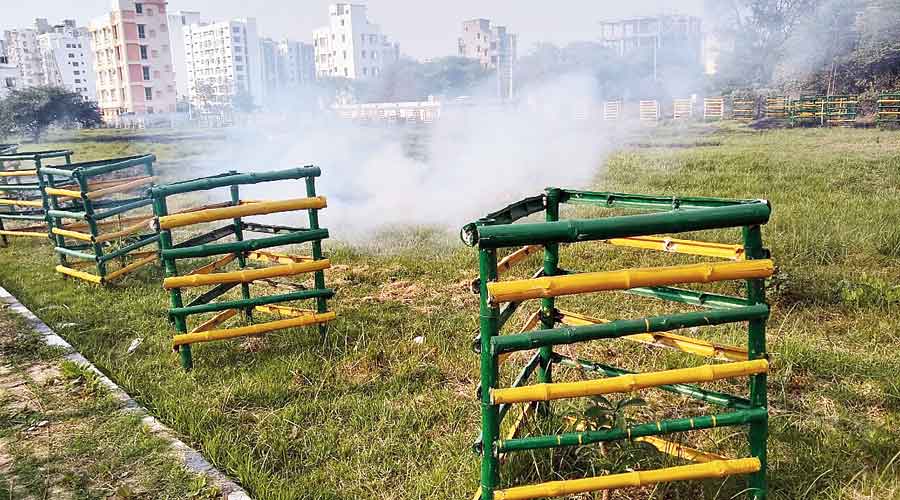The New Town authorities have formed a cell that will fly drones over grasslands and empty plots to try and stop people from setting dried grass, shrubs and waste on fire.
The drones will act as “eyes” of volunteers and officials of the New Town Kolkata Development Authority (NKDA), who will move around in vehicles and rush, along with police, to sites where fires will be lit.
“Trained professionals will fly drones equipped with high-resolution cameras,” an NKDA official said. “We will use multiple drones for aerial surveillance.”
Metro had on December 3 reported that dried grass and waste were being set on fire regularly on empty plots and grasslands in New Town, forcing residents to stay indoors and keep their doors and windows shut as dense smoke engulfed blocks.
The decision to launch aerial surveillance, as well as a host of other decisions to fight the fire menace, was taken after a meeting between NKDA officials and representatives of the West Bengal Pollution Control Board.
An NKDA official who attended the meeting said boards stating that setting fire to grass and shrubs is punishable will be put up on grasslands and empty plots as well as public spaces where people frequent like bus stops.
“A tractor fitted with a water tanker and a hose will be kept on standby to douse such fires,” the official said.
A WhatsApp group has been formed where residents can post information about grasslands on fire. People can also call up the NKDA helpline.
A number of grasslands in the New Town area attract a variety of birds for their proximity to marshes and water bodies. A joint study by the forest department and Hidco has confirmed the presence of 28 species on small patches of green along either flank of the Major Arterial Road.
The birds that have been recorded include the Acorbian Cuckoo, Yellow Wagtail, Black-tailed Godwit and the Red-wattled Lapwing.
An NKDA official said a grassland near Eco Urban Village, which attracts quite a few birds, had been burnt down.
NKDA chairman Debashis Sen said they were committed to preventing such fires and catching those who were lighting fires.
“Despite our best attempts to find out why the fires are being lit, we have not come across anything concrete. Theories range from people trying to warm themselves to driving out snakes…. We are going to do all we can to stop this,” said Sen.
Debanjana Das, an atmospheric scientist with George Mason University in the US, said burning of grasslands had far-reaching effects as pollutants PM2.5 and PM10 were released in the air.
New Town does not have an air quality monitoring station and there is no way to measure the impact of the fires on air. The air quality index in neighbouring Salt Lake, which has a monitoring station, was 309 on Friday, which is considered “very poor”.












